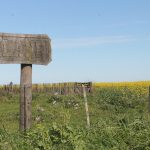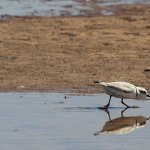The WHSRN Executive Office is excited to announce a new WHSRN site in Mexico: Bahía de Lobos. This coastal lagoon is located in the Islands of the Gulf of California-Sonora Flora and Fauna Protection Area, in the municipality of San Ignacio, in Río Muerto, Sonora. Bahía de Lobos was nominated as a WHSRN Site of Regional Importance, for supporting more than 20,000 shorebirds per year, especially for the presence of species such as Snowy Plover (Charadrius nivosus), Western Sandpiper (Calidris mauri), the roselaari subspecies of Red Knot (Calidris canutus roselaari), and Marbled Godwit (Limosa fedoa), among others.
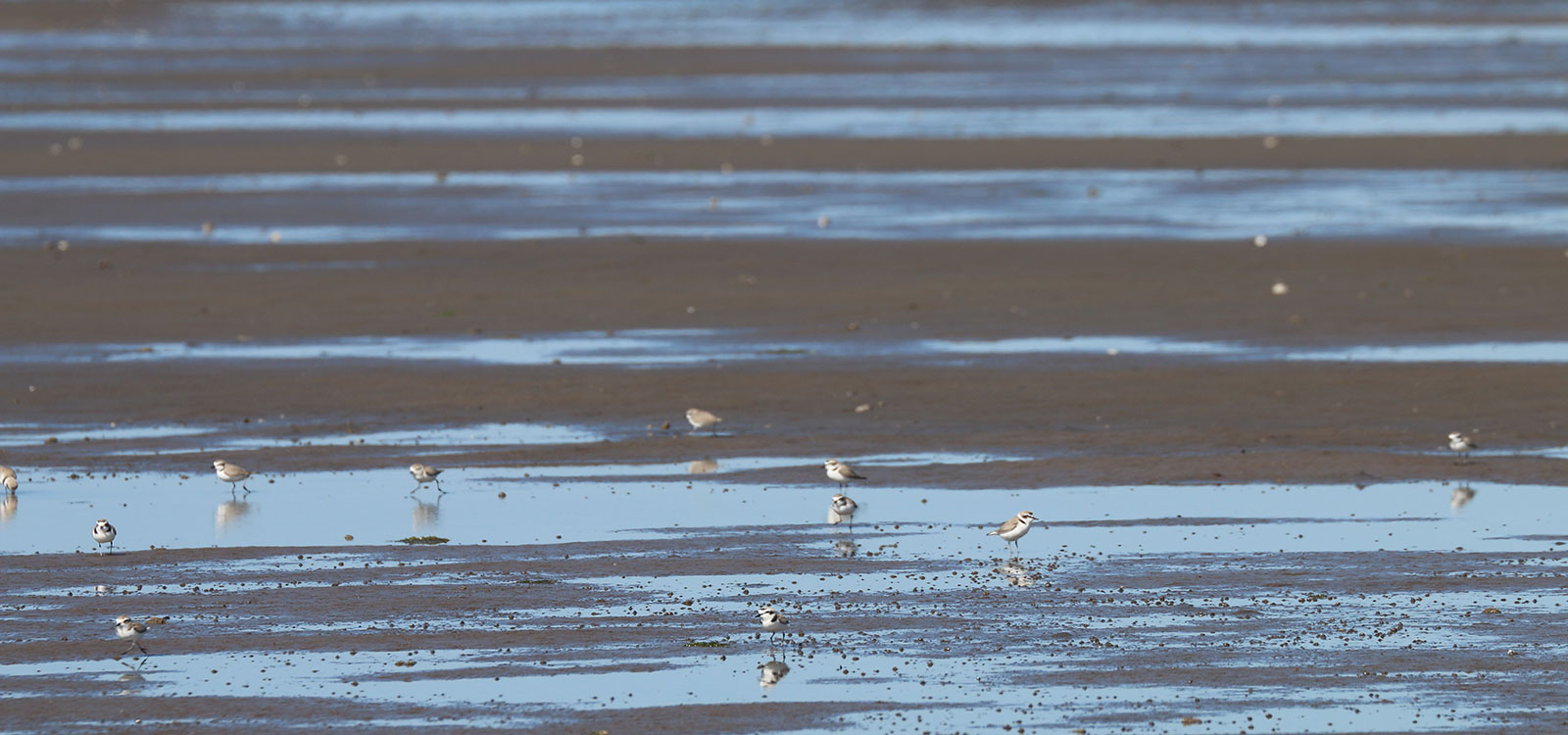
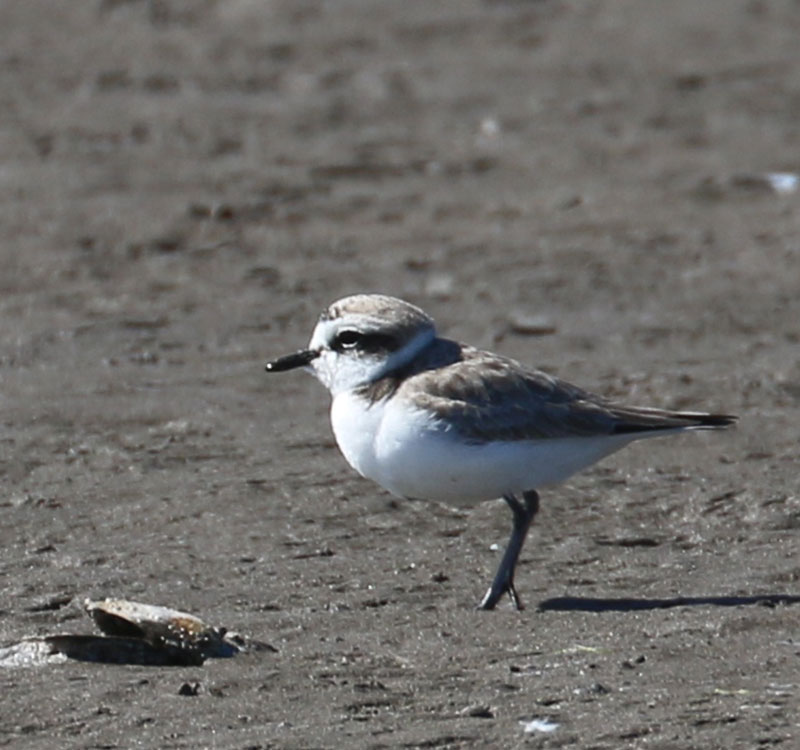
Left: View of the most important beach for Snowy Plover, in the southeast section of the site. Right: Close up of one of the Snowy Plovers. Photos: Roberto Carmona.
In early October, the WHSRN Hemispheric Council voted unanimously to include this site in the Network, based on both biological criteria and the conservation commitment shown by local partners. The designation was made possible thanks to data provided by the Bird Lab at the Universidad Autónoma de Baja California Sur and conservation organization Pronatura Noroeste. The National Commission of Protected Natural Areas (CONANP by its Spanish acronym) – for the Northeast and Upper Gulf of California Regions – is the institution responsible for the administration of the new WHSRN site.
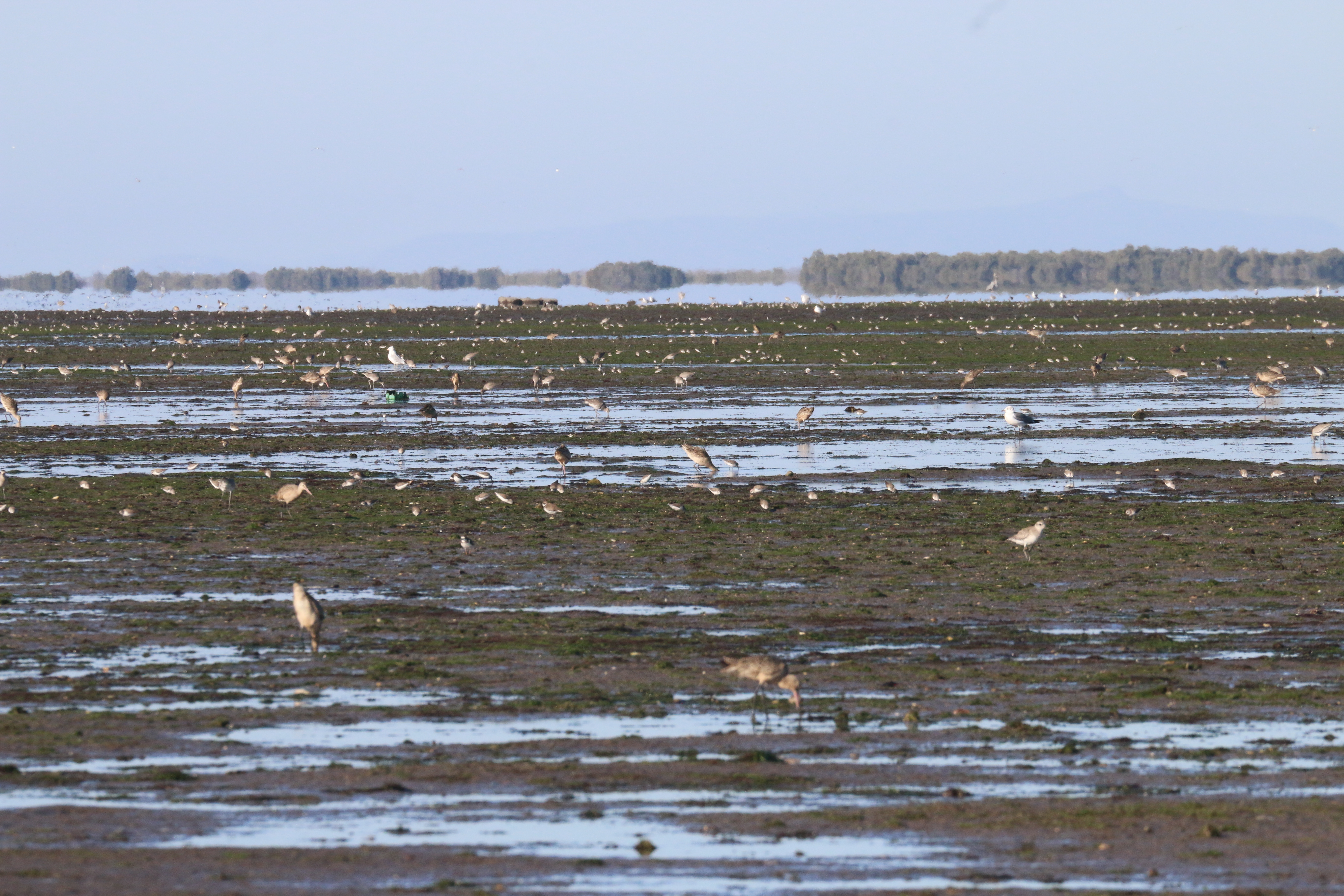
A mixed flock foraging at the site. Most of the larger shorebirds in the photo are Marbled Godwit. Photo: Roberto Carmona.
Bahía de Lobos is in the middle of the eastern side of the Gulf of California, on the southern coast of the Mexican state of Sonora. The bay covers about 11,800 hectares (~29,158 acres), and estuaries and coves that span another 4,500 hectares (~11,120 acres). The lagoon is framed by Isla Lobos, a narrow, 17.5 kilometer (~11 mile) island of 1,950 hectares (~4,820 acres).
Bahía de Lobos is a site of mixed semi-diurnal tides, meaning the bay drains and floods with two high tides and two low tides each day. Six to seven foot tides at Bahía Lobos expose large areas of mud and sandflats, creating critical foraging habitat for shorebirds.
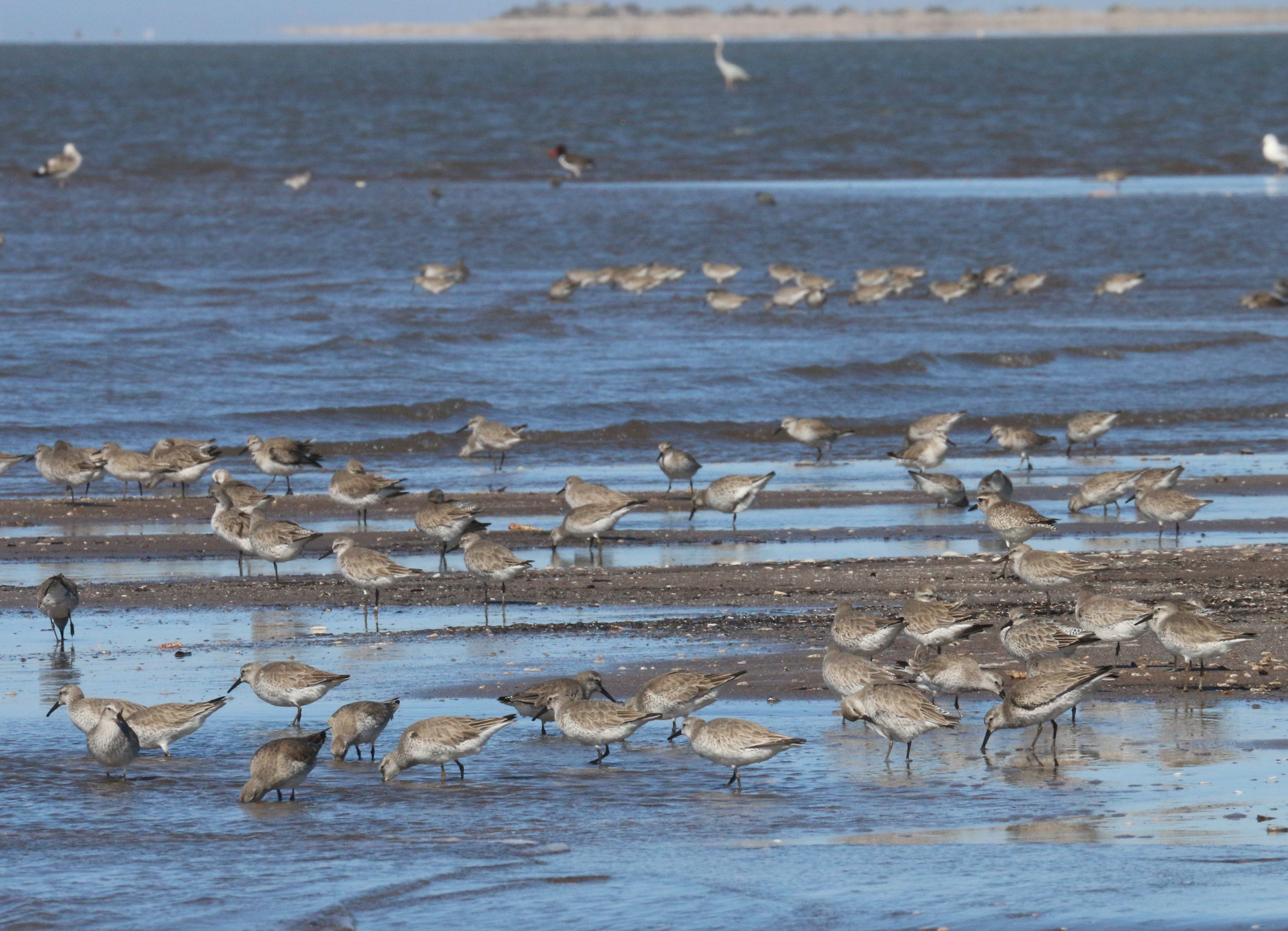
Part of a flock of more than 1,000 roselaari Red Knots at the northern end of the Bay. Photo: Roberto Carmona.
With this new designation, Bahía Lobos becomes the 19th WHSRN site in Mexico and the 106th site in the Network. WHSRN today includes 17 countries and hundreds of partners working to conserve and manage almost 40 million acres of shorebird habitat from the Arctic to Patagonia.
Please join the WHSRN Executive Office in giving a warm welcome to our new partners in conservation at Bahía de Lobos!





